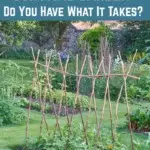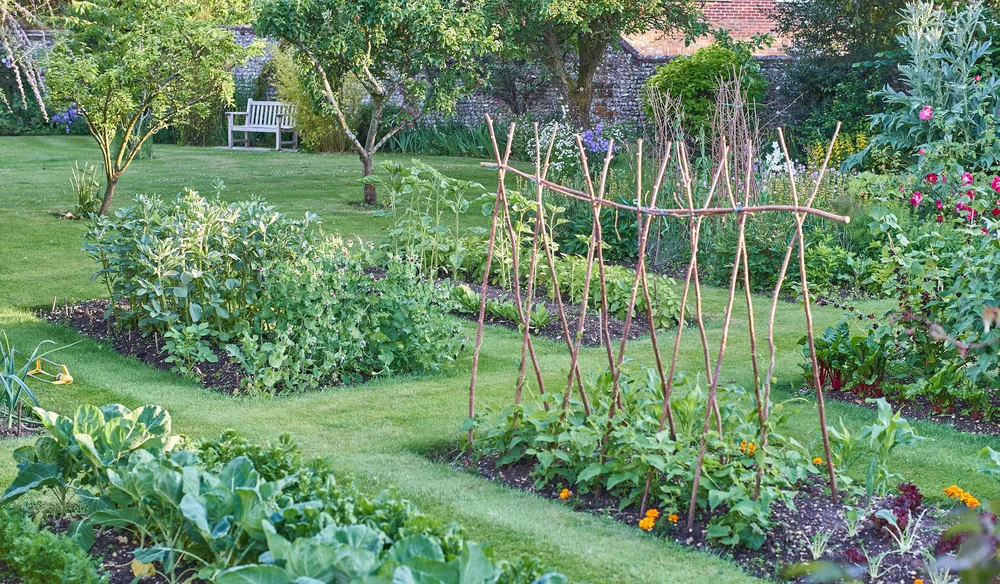
Make no mistake, a survival garden is not just any kind of beautiful backyard garden.
A survival garden is one that is carefully designed to yield enough crops for you and your family to live off of in times of need.
Your survival garden must also provide enough calories for your entire family to not only survive, but to thrive. It must supply essential vitamins and minerals, fats, carbohydrates and medicine too.
If you already thought gardening was a complex skill to learn, try doing it when survival is your main concern – as if all you could grow, was all you could eat. Could you do it? Do you even want to try?
When you garden as if there are no stores to shop from, no farms to make up for your lack, no one else to rely on but you, then you have achieved the status of a seasoned survival gardener.
If you have the innate desire to provide for your family, but are unsure of where or how to gain the necessary experience, keep reading and gather inspiration to plant your own survival garden.
Why grow a survival garden?
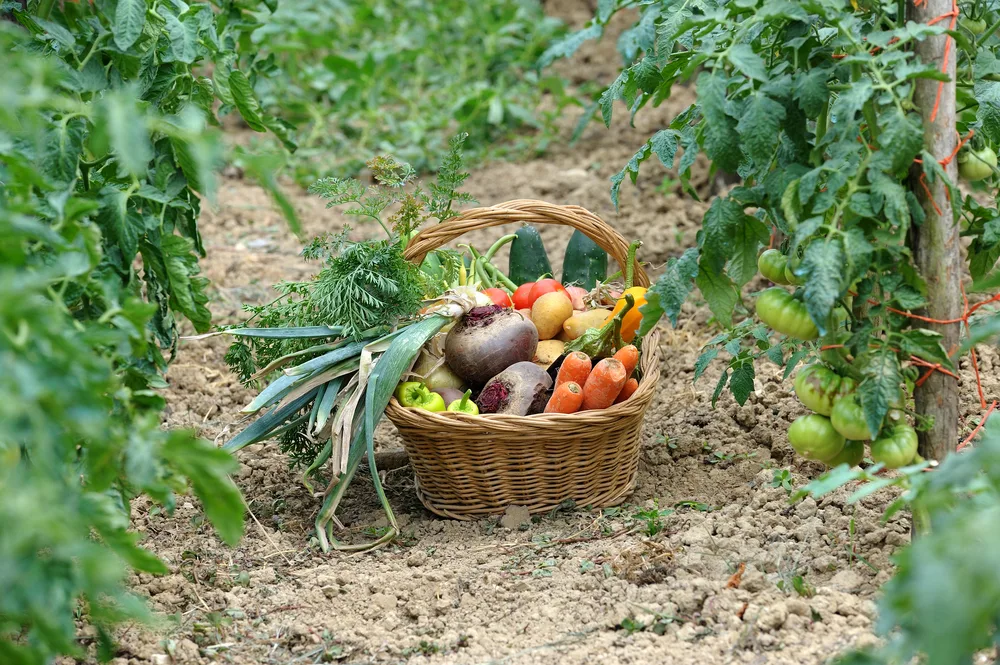
Think about how often you go shopping for food and everyday essentials. Every week? Once every two weeks? Just once a month, or even less?
If you are unable to leave your home for an extended period of time, the ability to harvest fresh produce from your yard is a lifesaver! It will also aid in filling your pantry, so you can eat well for several months without ever leaving your property.
Perhaps more importantly, a survival garden can provide you with organic veggies that are far superior to store-bought conventionally grown foodstuff.
In your survival garden you can also grow several kinds of fruits and vegetables, along with diverse heirloom varieties which cannot be found in typical grocery stores. These fresh veggies, in turn, not only taste great, they help extend the life of your stored food supply.
Gardening is, and always will be an excellent way to spend more meaningful time outside, relieving stress and giving you much needed exercise to stay fit. If it can supply all the fresh greens and starchy carbohydrates your body requires, then what are you waiting for?
Getting started with survival gardening
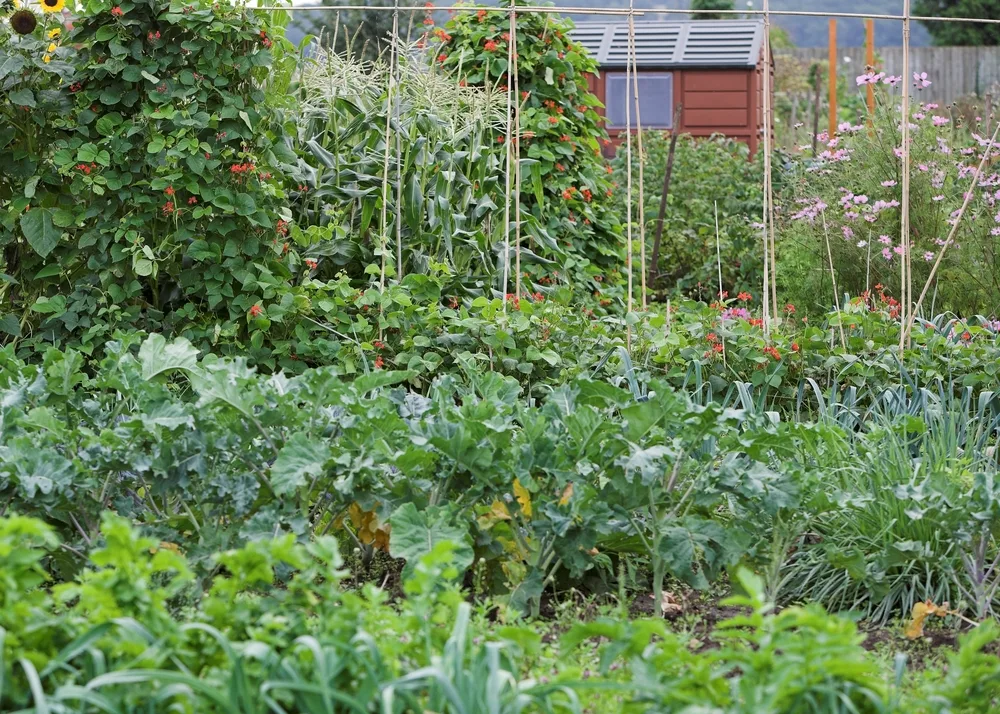
Start with the basics by starting small.
Then set all pretenses aside.
You will not be a successful survival gardener overnight. It takes seasons of gardening experience, foraging practice, knowledge of saving seeds and propagating trees, along with a good pinch of luck to make it all work. But you have to begin somewhere.
Where is that? In the garden, in any size garden. As your skills grow, you can increase the size of the plot until it becomes one that meets all your survival requirements.
If you are new to growing a garden and living a homesteading life closer to nature, everything will take practice.
- selecting seeds
- sowing seeds
- saving seeds
- growing herbs
- planning the layout of the garden
- harvesting at the right time
- canning and preserving
- raising animals
- composting
- vermicomposting
Don’t ever be deterred by the amount of work or knowledge it takes, for if you can take pleasure and joy in providing wholesome food for your family, then a proud sense of self-reliance can take over.
And that alone, can change the way you look at what you eat, about food production around the world, and how to stay healthy in a challenging and changing world.
Designing a survival garden
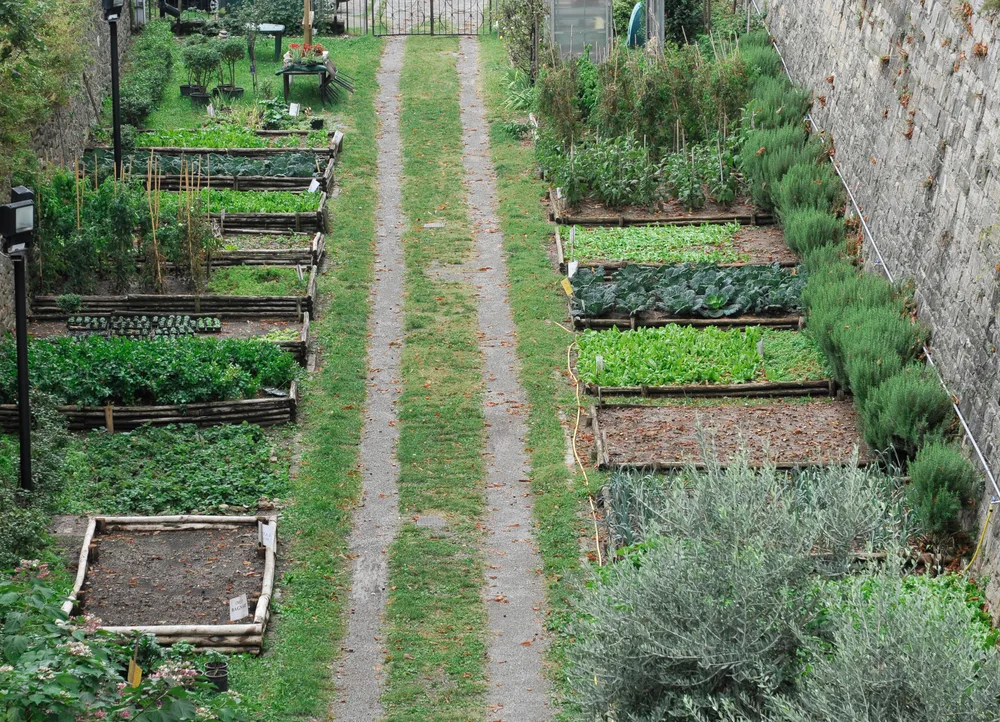
Planning the layout of your survival garden is just as essential as buying garden seeds.
As for what kind of garden seeds to plant, always choose open pollinated seeds that allow you to save your own seeds. This ensures that you have stock for the following year – with enough for your family and more to trade if necessary.
Remember that a survival garden is more than just a garden, it is your lifeline for when the rest of the world is falling apart. And you need to plan ahead for much more than you can imagine eating. It is always beneficial to have excess crops.
Crops may fail due to drought or disease, or any other reason under the sun (nonviable seeds, lack of nutrients in the soil, insect damage, etc.) and for these reasons you need to think diversely.
Plant both perennials and annuals. Have some trees, canes and bushes for fruit. Grow herbs. Eat weeds.
Think about incorporating both sun and shade loving plants that fit nicely into your landscape. Grow a little bit of everything, so that your basic nutritional requirements are covered in an exciting way, day after day.
How big does a survival garden need to be?
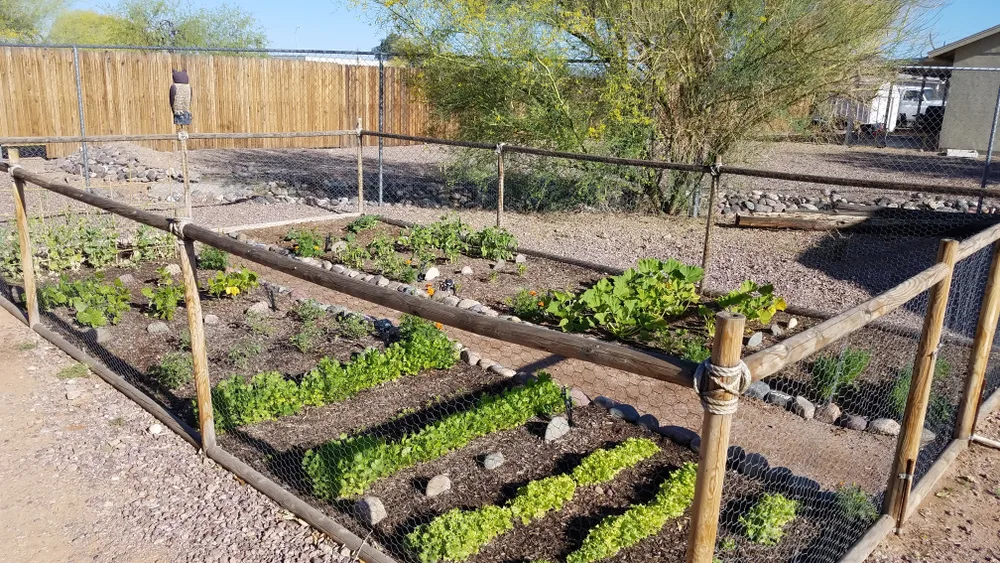
Several factors come into play when determining just how large your survival garden needs to be.
- How many people you will be feeding (counting children and adults)
- What kind of crops you will be growing (some demand more space than others)
- What kind and quality of soil you have, as well as what climate you live in
- Your gardening expertise and familiarity with succession planting
- How much time you have to devote to gardening and feeding your family
While we can’t give exact numbers, it is safe to say that 1/4 acre is the minimum amount of land you will need for a survival garden.
Depending on the size of your family and your vegetable preferences, you may even end up with a 2-acre survival garden.
The best survival garden is one that meets the specific needs of your family.
Start small and grow your survival garden bigger each year until you find the amount of land (and combination of plants) that is right for you. Smaller gardens can in fact have higher yields, and that is great news!
Raised beds and containers can increase your harvest immensely as they are easier to maintain, leaving you with plenty of time to learn other homesteading skills.
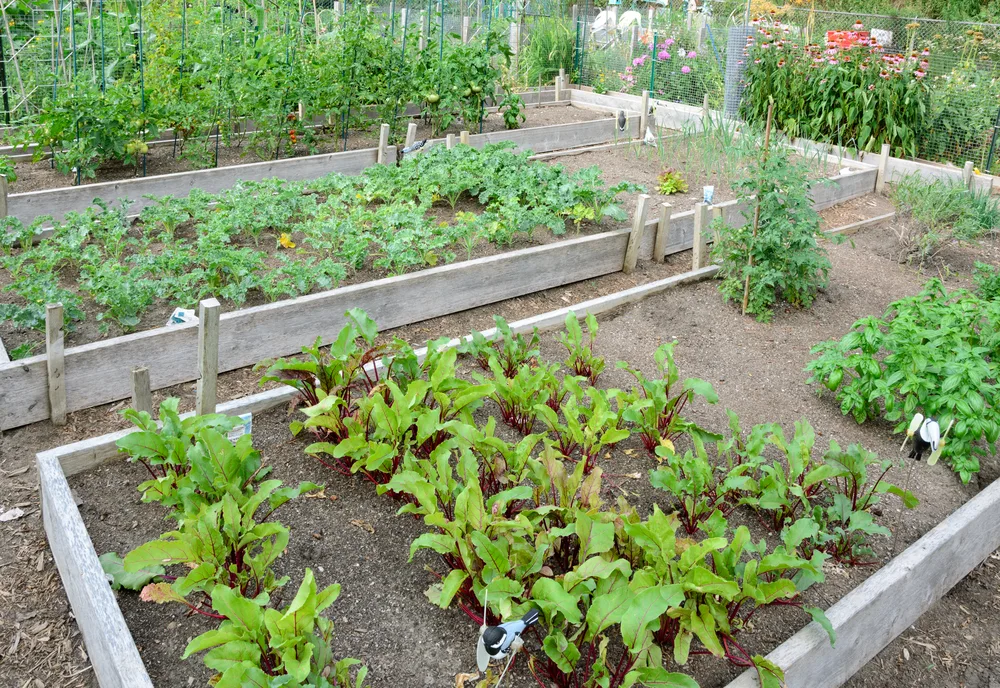
Becoming an efficient grower means using your space wisely.
Here are a few ways to successfully manage and plant a smaller space:
20 Tips To Make The Most Of Your Small Garden @ Natural Living Ideas
Your Ultimate Guide to Square Foot Gardening @ Gardener’s Path
Intensive Vegetable Gardening @ Planet Natural Research Center
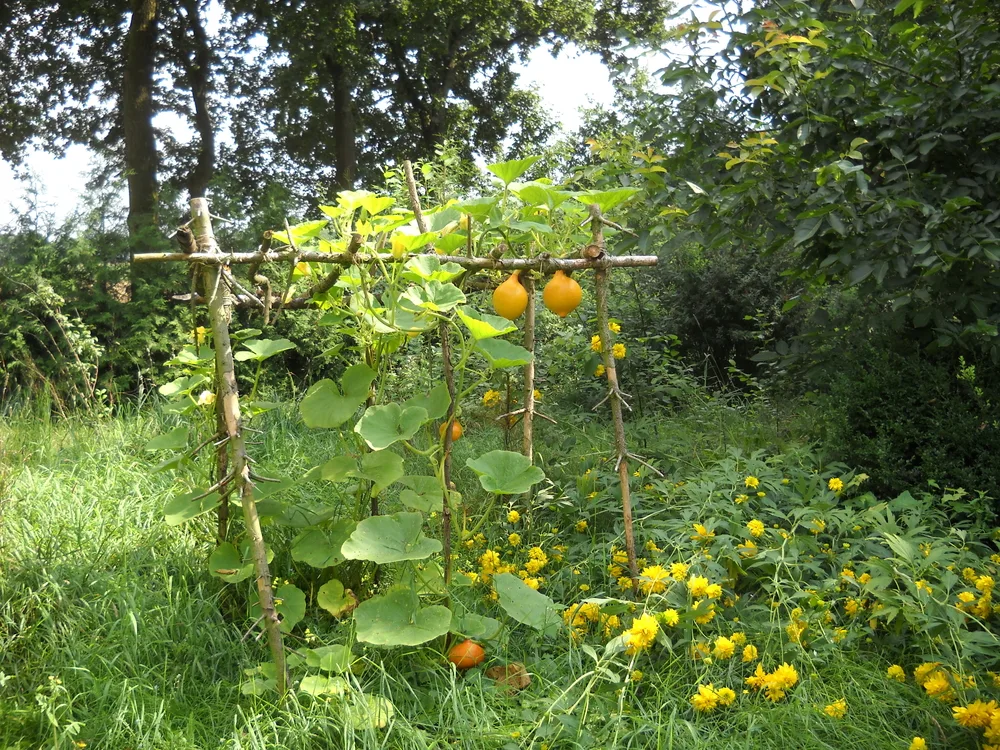
What to plant in your survival garden
If you are going to be surviving on your own vegetable patch, you better be eating well.
While winter squashes provide a great source of vitamins A and C, potassium, iron and manganese too, you probably don’t want to waste precious growing space on them if they won’t go down a treat.
The same can be said for every vegetable. Take Brussels sprouts for instance, or beets. Some people adore them, others loathe a single meal where they are present in a dish. Let alone planning for an overabundance of them!
If you are going to be spending time tending to your food, you better enjoy dining on it too.
We’ll go over nutrition needs in a moment, but the easiest way to decide what to plant in your survival garden is to grow the foods that you would normally buy from the store.
Then, as your gardening expertise grows, add new-to-you vegetables in your survival garden such as okra, asparagus and bok choy.
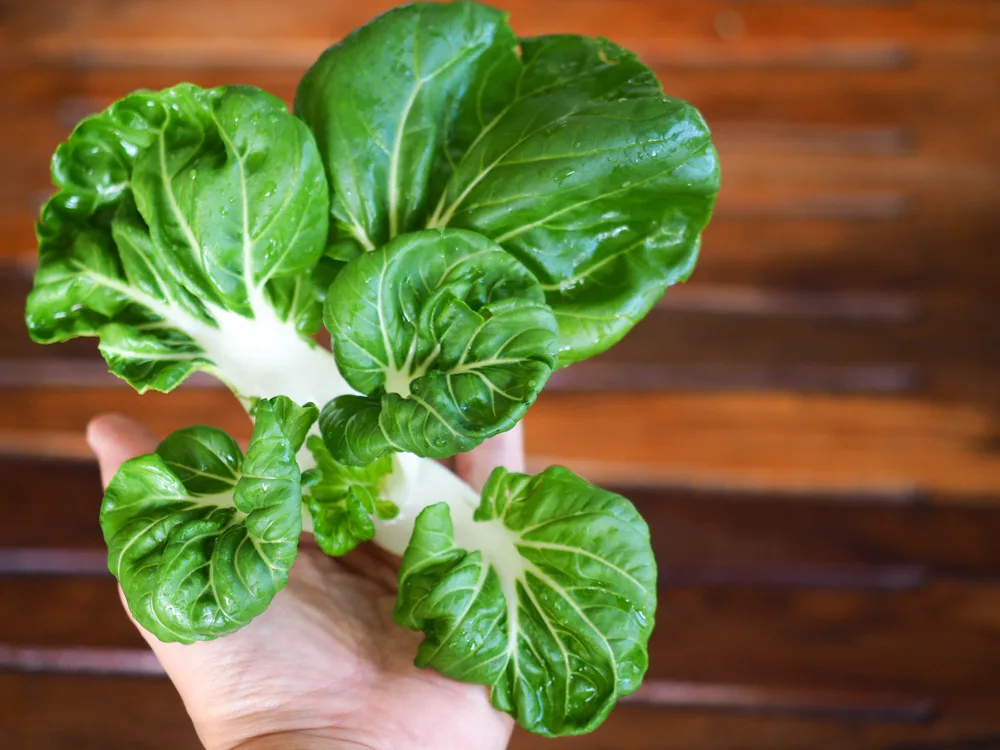
Grow vegetables your family likes to eat
This cannot be stressed enough. If you aren’t going to eat it, why grow it when there are plenty of healthy alternatives out there. While there may always be a small amount of food waste, even with the best of intentions to “preserve everything”, time can easily slip away.
Making compost is always an option for vegetables past their prime, though it is far more rewarding to eat what you grow. Kids know this too, and it is a great time to get them involved in learning how to grow what they like to eat best.
Before planning and planting your survival garden, make a complete list of all the vegetables your family enjoys eating on a regular basis. Then add more perennials and easy to grow crops from there.
Easy to grow crops
If you are just starting out with survival gardening, besides planting the vegetables you love to eat, you may want to plant some that are easy to grow.
In some cases, the lists will overlap. It is more than a wonderful coincidence when that happens.
Planting easy to grow vegetables will give you both experience and confidence in gardening, leaving you with the next exciting challenges of experimenting with harder to grow veggies.
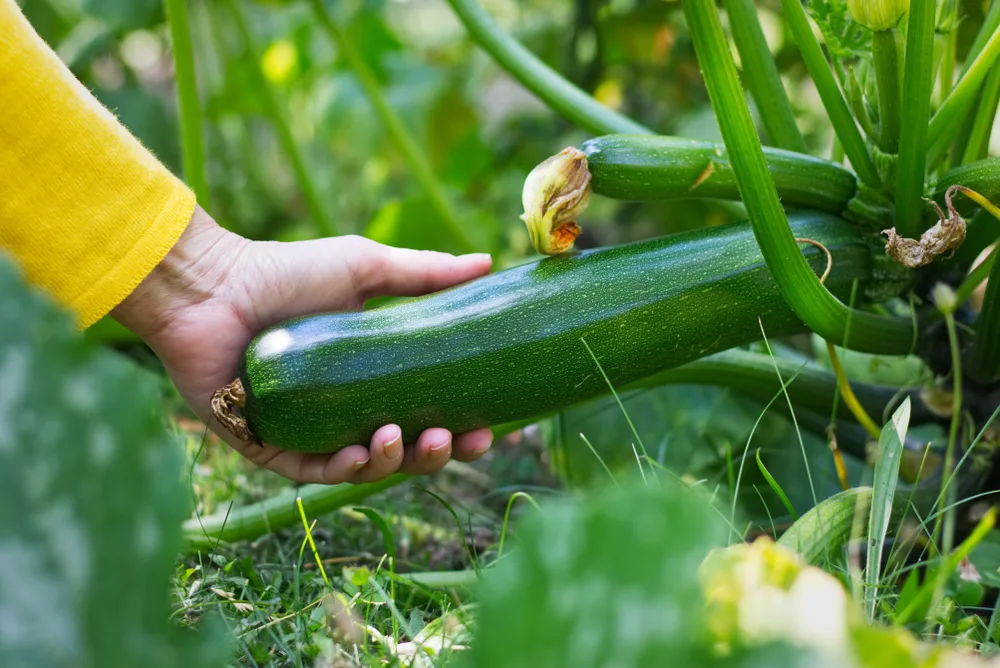
Start with these easy to grow vegetables, then learn how to cook, ferment, preserve or eat them straight from the garden.
- beans
- carrots
- lettuce
- peas
- potatoes
- sunflowers
- zucchini
Check out this list of the 17 Easiest Fruits and Vegetables ANY Gardener Can Grow
Crops that store well
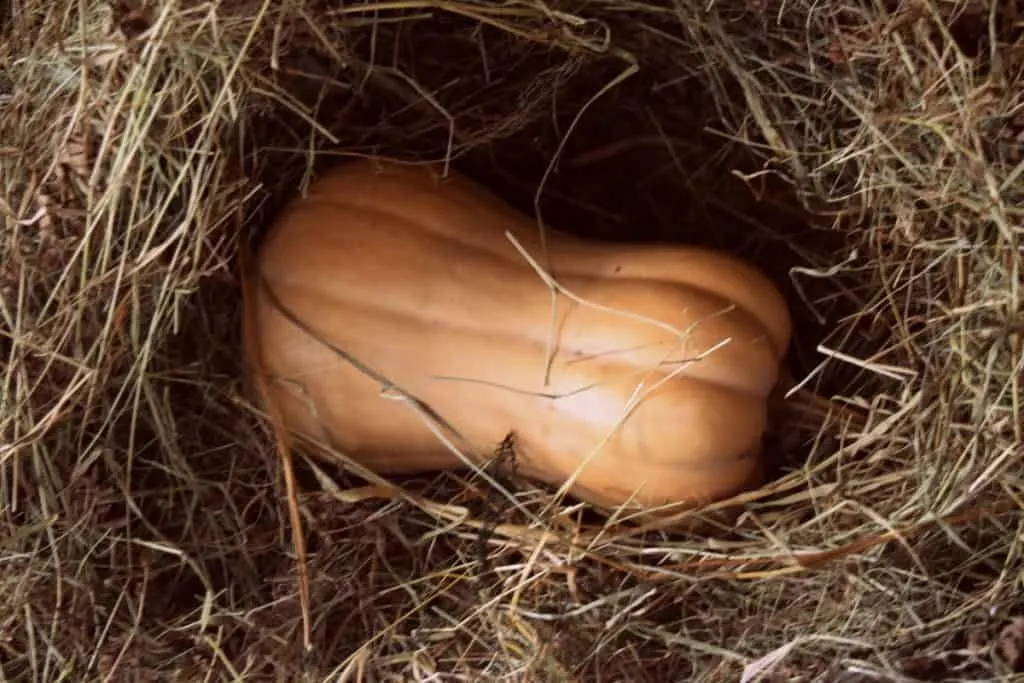
The next seeds to think about planting in your survival garden, are crops that store well.
As summer moves on, it can be difficult to keep up with eating your greens every day – especially in times of overabundance.
While the thought of dehydrating and canning excess harvests often comes first, winter storage in a basement, cellar or other cool, well-ventilated place is among the easiest of preservation methods.
At the moment, we still have an abundance of apples in our cellar that we harvested in October. It is now April. More than 6 months later and we are still able to eat crisp apples from our own storage, with no need to go to the store for fruit.
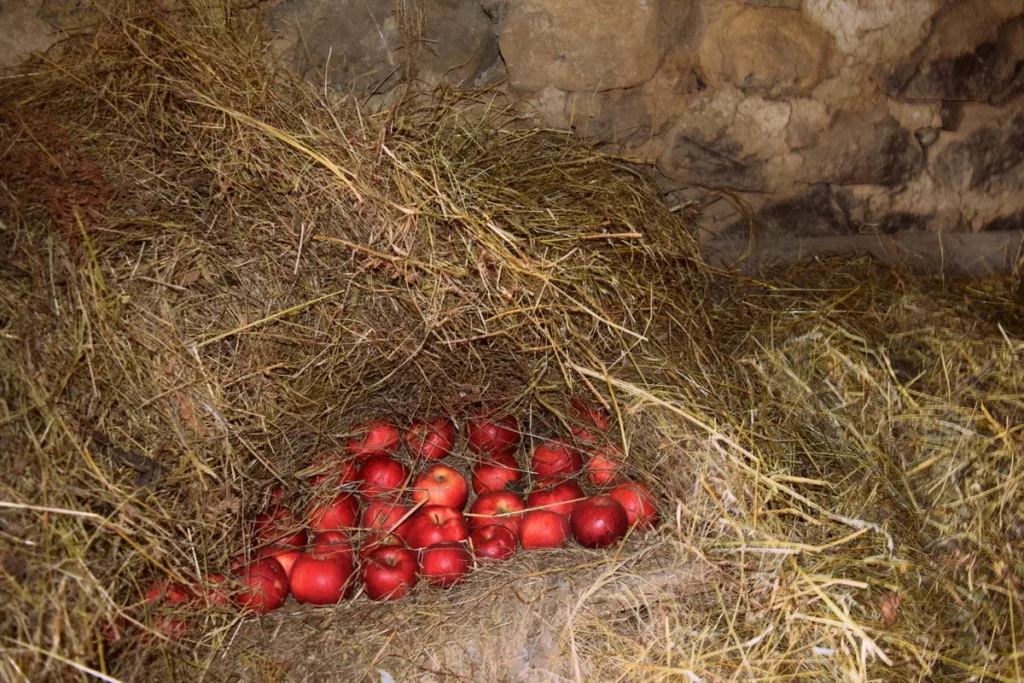
- cabbage
- garlic
- leeks
- onions
- rutabagas
- turnips
- winter squash
How long you can keep your crops in storage depends on what they are, the condition of your storage space, and how well you rotate your stock.
9 Crops to Grow for Food Storage @ Grow a Good Life
50 Essential Crops to Grow in Your Survival Garden @ Crisis Equipped
Perennials
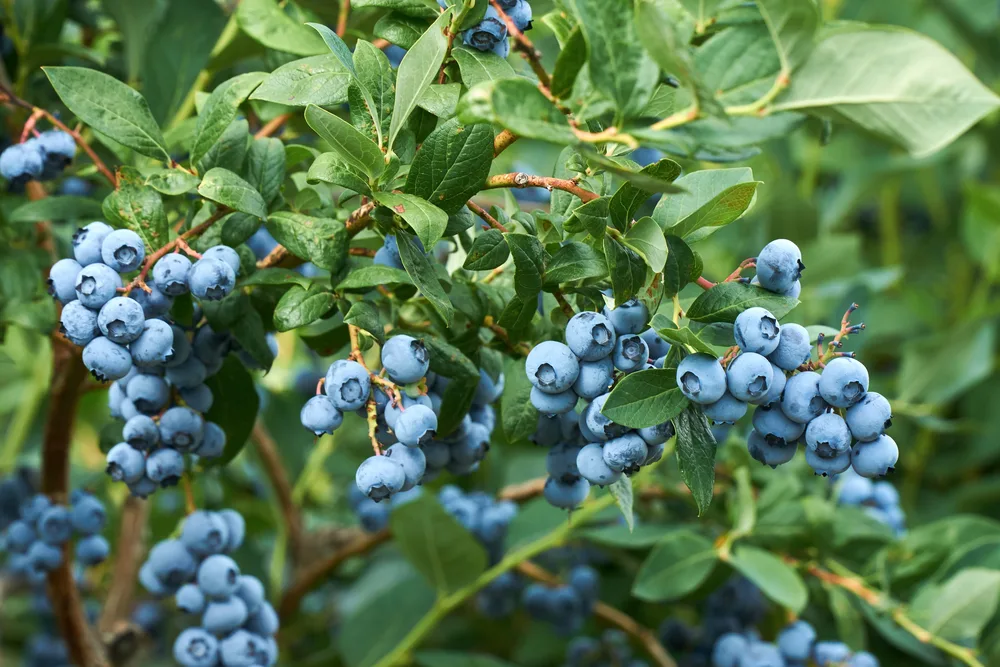
No garden is compete without perennials to rely on year after year.
There is no fuss about saving seeds and less worry about sun and shade requirements. You’ll also find in time that many perennials are low-maintenance and have lower water requirements too.
Perennials will save you time and money, even as they extend the life of your garden harvest.
If you are planning a survival garden, plan to incorporate a few of the following perennials in your edible landscape:
- asparagus
- blueberries
- nettle
- rhubarb
- trees – fruit and nut
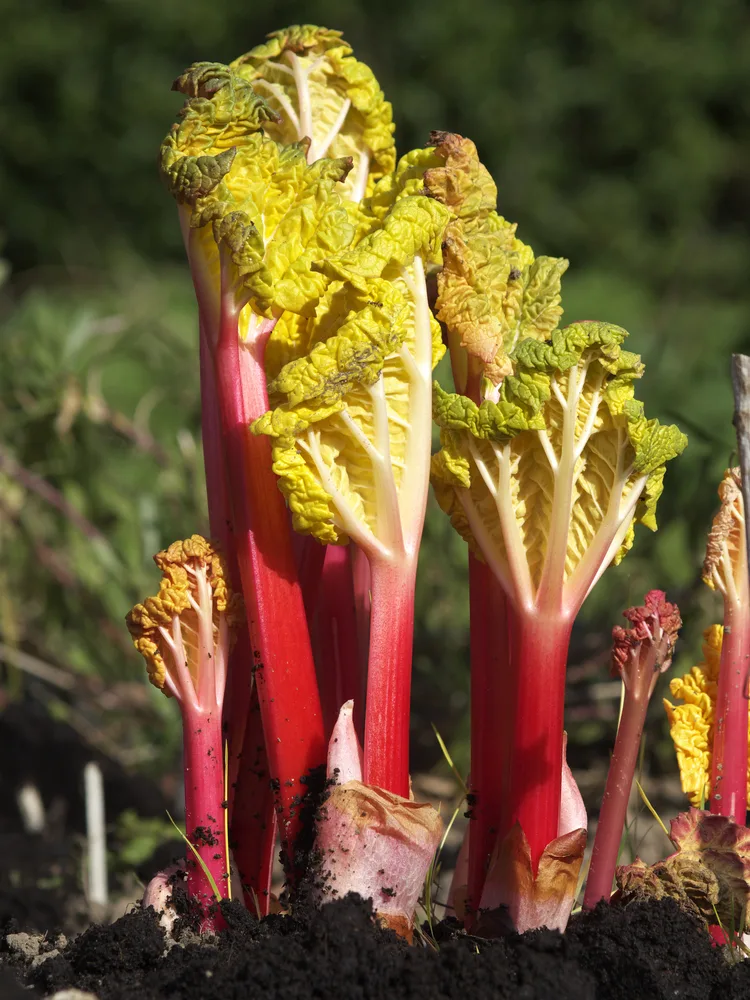
And don’t forget about the herbs for both spices and medicine.
Herbs and edible flowers
Just as you’ll want to plant a healthy combination of annuals and perennials, herbs are essential in your survival garden.
Herbs require little space and can be planted in containers or directly in the garden, nestled between your other garden crops. Grow the herbs you already prefer cooking with, then add in a few more for flavor and spice.
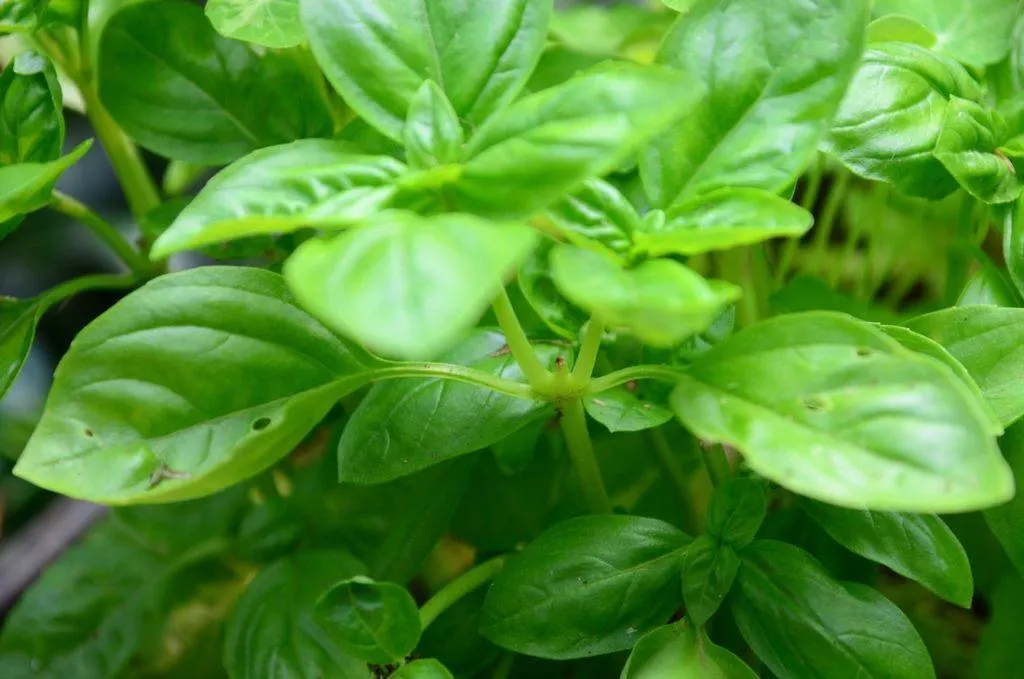
Once your herbs are ready for harvest, you can dry them and grind them as a spice. You can also make tinctures and herbal teas to nourish your health.
Edible flowers in your survival garden
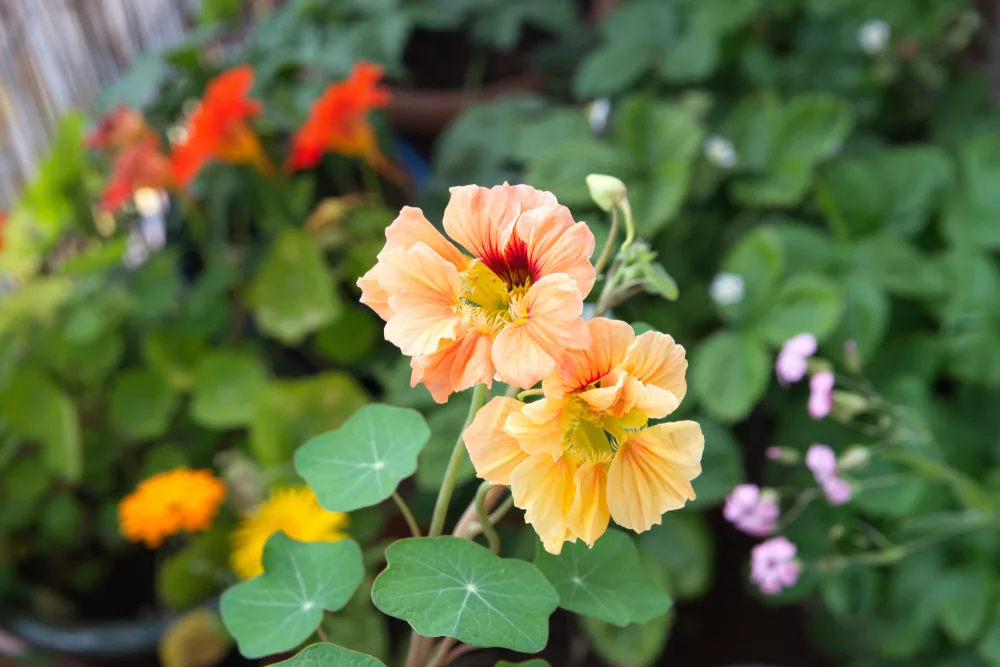
You may not think at first to plant edible flowers in your survival garden, though for some gardeners they are completely necessary. Just like herbs, they are also food and medicine.
And yet, they are so much more than that! In the garden, they attract bees and other insects who will also be pollinating the vegetables you eat.
- calendula – good for toothaches
- cornflowers – can be used as a soothing eyewash
- marigold – improves color of dishes in lieu of saffron, soothes sunburns
- nasturtium – entire plant is edible, improves immune system
A survivalist needs to do more than eat to stay healthy. They need to exercise, drink plenty of fresh water and eat beneficial herbs too, at their own discretion.
Survival gardening and nutrition
Before planting a survival garden, it is necessary to estimate your optimal nutrition requirements. This, of course, will just be an approximation, as having a survival garden also assumes that you have other foods stored for times of absolute need: canned foods, dried and smoked meats, aged cheeses, grains, etc.
The vegetables growing in your survival garden will often be a supplement to what you already have on hand. Many prepping websites will have figures on how much you should stock up on for a determined period of time. A survival garden is here to always help see you through difficult times.
In any case, you will want to make sure that certain nutritional requirements of your family are covered.
Fats
If you don’t have live animals (cows, goats, pigs, ducks, geese, turkeys or chickens) on your farm, or a freezer stocked full of locally raised and butchered meat, you’ll have to obtain fats from what you can grow in the garden instead.
Nuts such as chestnuts, pecans, walnuts and hazelnuts are wonderful sources of plant-based fats, though you will need to plan several years ahead for your first harvest.
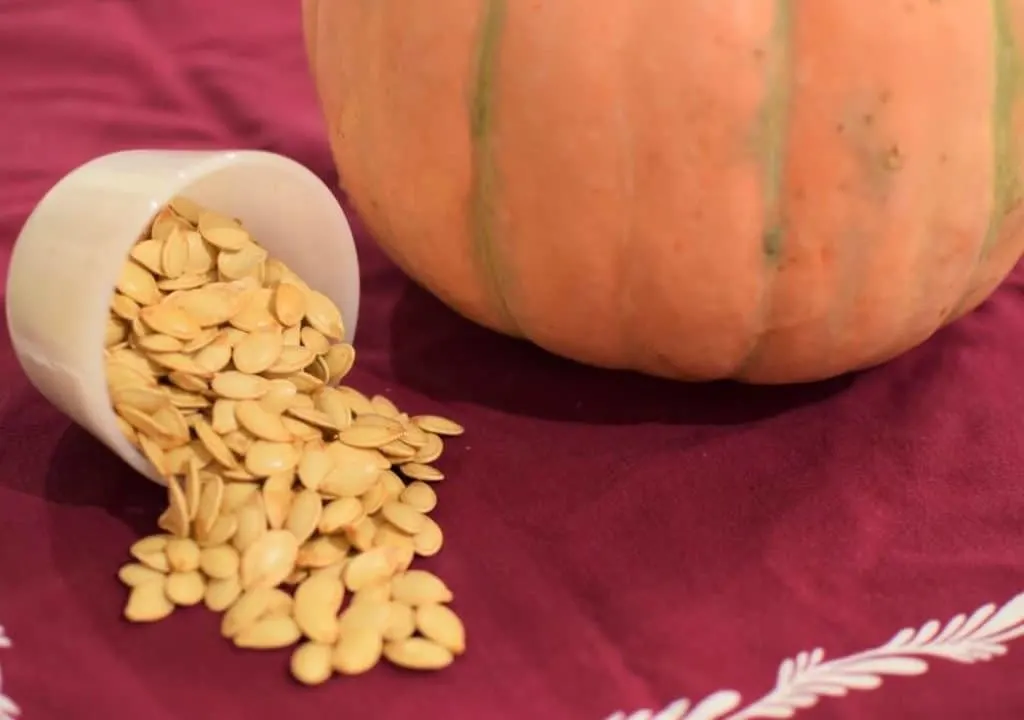
In the meantime, try growing a faster crop:
- hemp seeds
- flax seeds
- pumpkin seeds
- squash seeds
- sunflower seeds
All of the above are relatively easy to grow and are harvestable by hand. Storage is uncomplicated too.
Carbohydrates
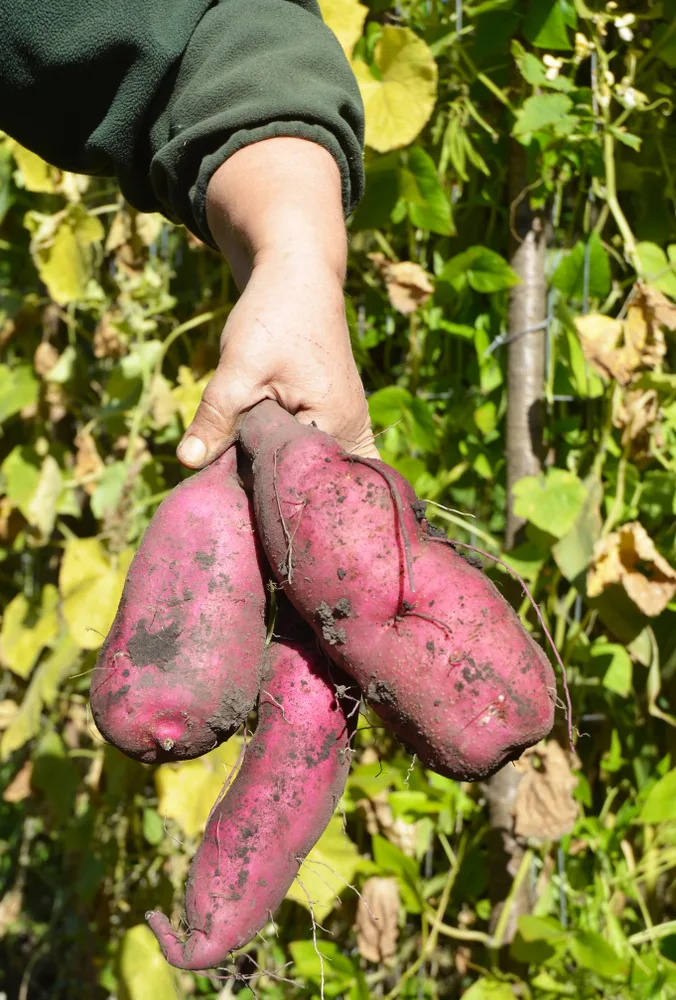
Sweet potatoes, potatoes, taro root, beets, corn, legumes – they all provide varying levels of energy to our day. While too much of a good thing can be too much, in a survival situation it is wise to plant many of these vegetables, because they also tend to be the more prolific.
Quality is always a great attribute to strive for, yet sometimes it is quantity what we are after. Carbs are wonderful for doing just that.
So don’t forget to plant your patch of peas, squashes, lentils and dried beans.
Protein
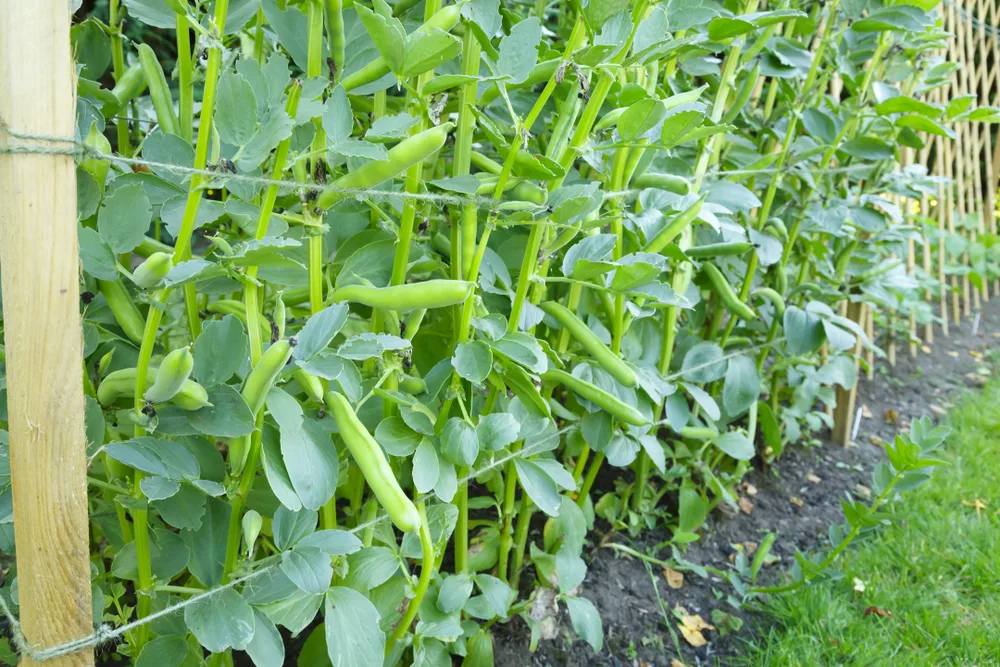
In addition to fats and carbs, you must strike a balance with eating enough protein, to maintain your muscles and vital energy throughout the day.
Fava beans are just one inexpensive source of protein.
Though you may be surprised to find that broccoli, cauliflower, spinach, artichokes, Brussels sprouts and asparagus are all rich in protein. Make space for them in your garden and reap the benefits.
19 High-Protein Vegetables and How to Eat More of Them
Additional sources of protein
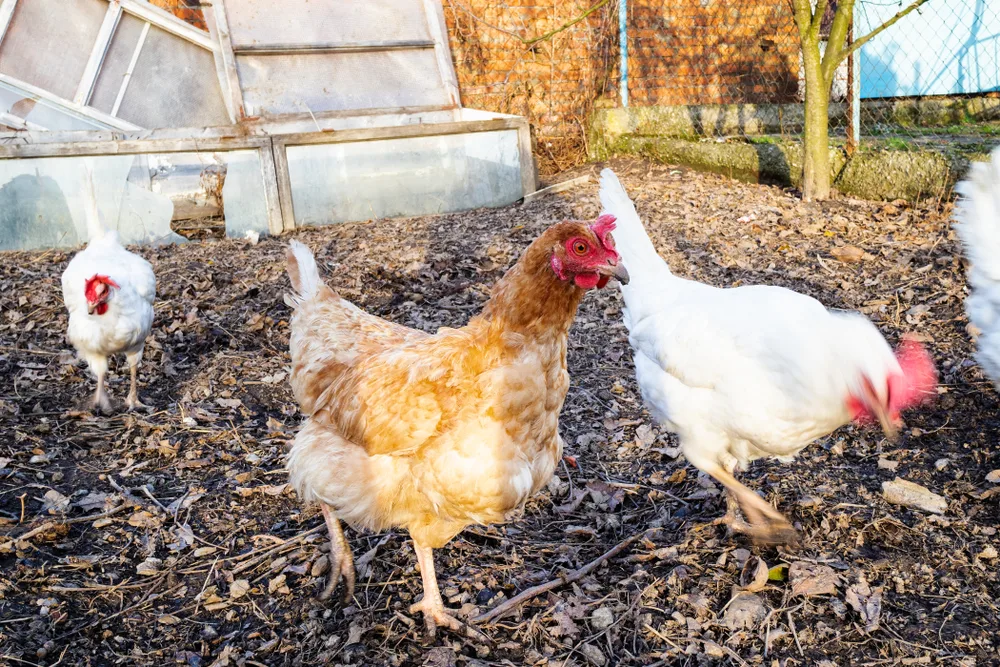
Although it may take additional effort on your part, adding a flock of chickens for both meat and eggs is one way to add a significant amount of protein into your survival diet.
Raising rabbits for meat, or goats for milk are other routes to try, provided that you always enjoy what you are growing and eating.
Storing your survival garden crops
There are several ways to preserve and store your survival garden crops for the colder months when plants no longer grow.
As with learning how to tend to a plethora of vegetables, you’ll also have to invest plenty of energy in learning how to cook, preserve and store them for later use.
Preserving – freezing, dehydrating and canning
Survival gardening is about much more than planting and harvesting. It also encompasses how you preserve your garden crops.
Freezing your vegetables is a common way to save food for the future. But without electricity or a backup generator on your side, there are perhaps better options for preserving food that have been around hundreds and thousands of years longer.
Dehydrating can be done with the use of the sun in warmer climates, a dehydrator or oven in areas with less solar power.
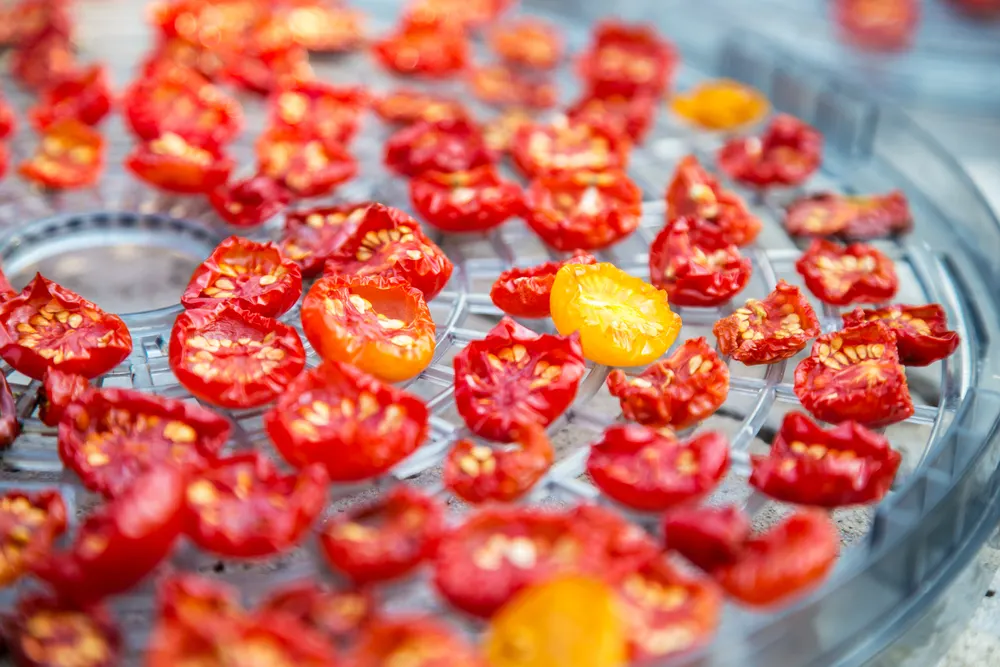
And of course, canning. The ultimate goal that every homesteader aspires for: to have a pantry full of homemade pickles, chutneys jams and jellies.
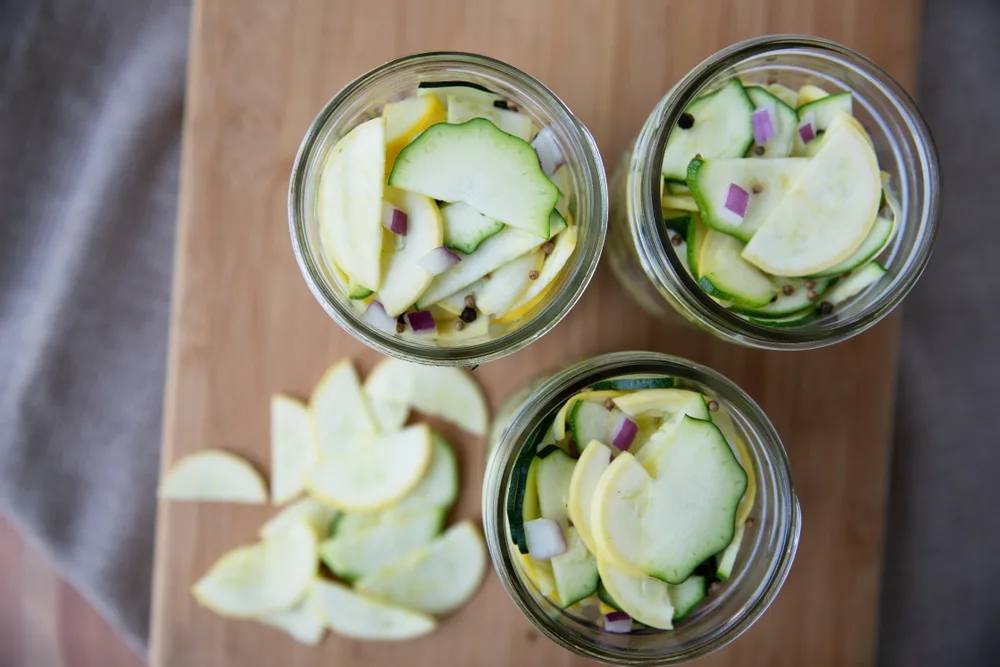
Winter storage
We’ve already touched on this subject in “crops that store well”, now let’s take it a thought further.
After harvest you had better be prepared with how and where you are going to store your beautiful crops.
Will it be in the root cellar (if you have one)?
Can you leave your root vegetables in the ground, covered with a thick layer of mulch (depending on your climate and location)?
Or do you live in a place that allows for year-round gardening of sorts? For example, can you extend your growing season in a greenhouse, or in a sunny area indoors?
Once your crops are underway in the garden, sit down and plan it all out, how you are going to store everything you produce. This means thinking about stainless steel, glass, and ceramic containers too.
Foraging in combination with survival gardening
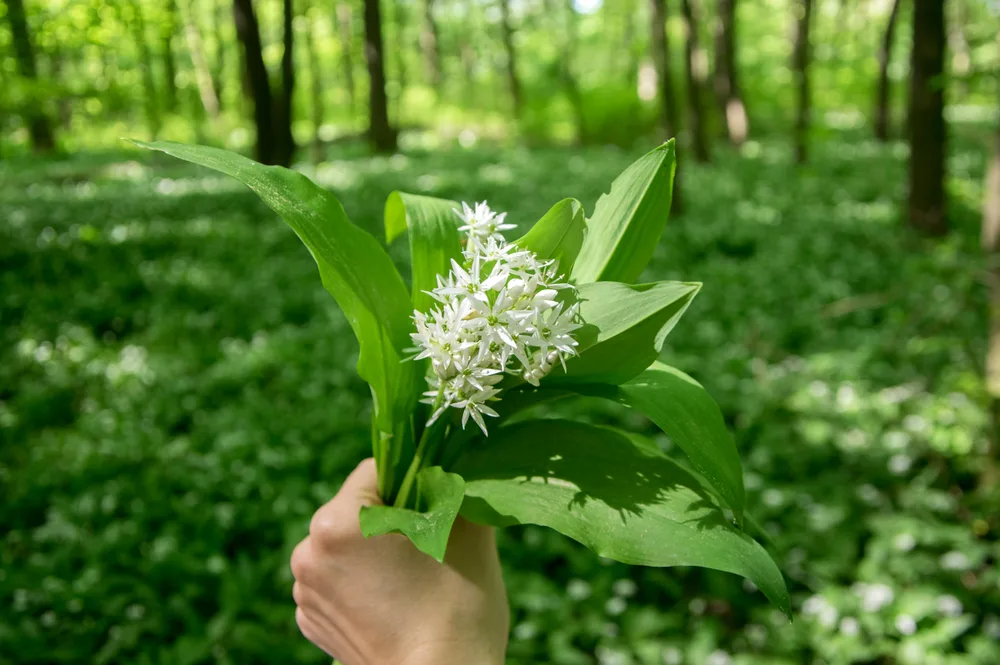
To provide food year round, you may also need to get comfortable with the idea of trying new plants.
In survival mode, it does not pay to be picky. Soon you’ll be eating common garden weeds like your life depends on it, because it may.
Learn to recognize and eat nettles, goosefoot, ramps, chickweed, purslane, dandelion and cleavers, just to name a few.
Even if your life doesn’t depend on it, learning to forage is an amazing survival skill that will not only aid in keeping you healthy, you can teach this invaluable skill too, should the need arise.
You may even be able to make money by teaching others to forage, or to trade your foraging skills for crops that your garden couldn’t grow.
Potential challenges and limitations of growing a survival garden
A well thought out, designed and planted survival garden should be able to provide a year’s worth of fresh vegetables for you and your family. That is in an ideal world. And an ideal world the world is not.
You may choose to plant a survival garden for several reasons: unemployment or unpredictable future income, supply shortages, food insecurity, crop failures, disasters, etc. The list could go on.
When times are tough, your first reaction should be to have shelter, water and food for your family, so that you can thrive even in times of scarcity.
Survival garden obstacles to overcome
A survival garden isn’t all fun and games. It requires some serious work and a survivor mentality to pull it through.
It helps if everyone in the family is on board, children too. There are plenty of activities to get kids involved with survival gardening, starting at planting, all the way through harvesting, preparing and eating the food.
Along the way, you’ll have to observe your survival garden and surroundings, keeping everything in good order, including your positive mindset.
Failure – In a survival garden failure is never an option. Practice, practice and practice some more, making sure to grow a diverse selection of crops each season. Gather knowledge and add to your homesteading skill set yearly!
Limited resources – Time and water are always the most prominent gardening challenges. Combat this by learning how to grow plants efficiently in your soil, by knowing what works (and what doesn’t) with less and less trial and error. Think about harvesting rainwater, planting more perennials and using deep mulch to keep the soil moist in times of limited access to water.
Limited space – Food security is all about having access to land. The larger the patch you can claim as your own, the better. However, if you do have a small space, think vertically, use pots and containers for growing, learn all about succession planting and make the best use of what you have.
Protecting your survival garden – When it comes down to it, people and animals will likely want to harvest what is ripe. Take it as a lesson to plant a diverse amount of vegetables, and stagger planting times if possible. Learn to recognize plant diseases and always have a backup plan. Guinea hens are wonderful at eating insects and warning you of any intruders, though your neighbors may not approve!
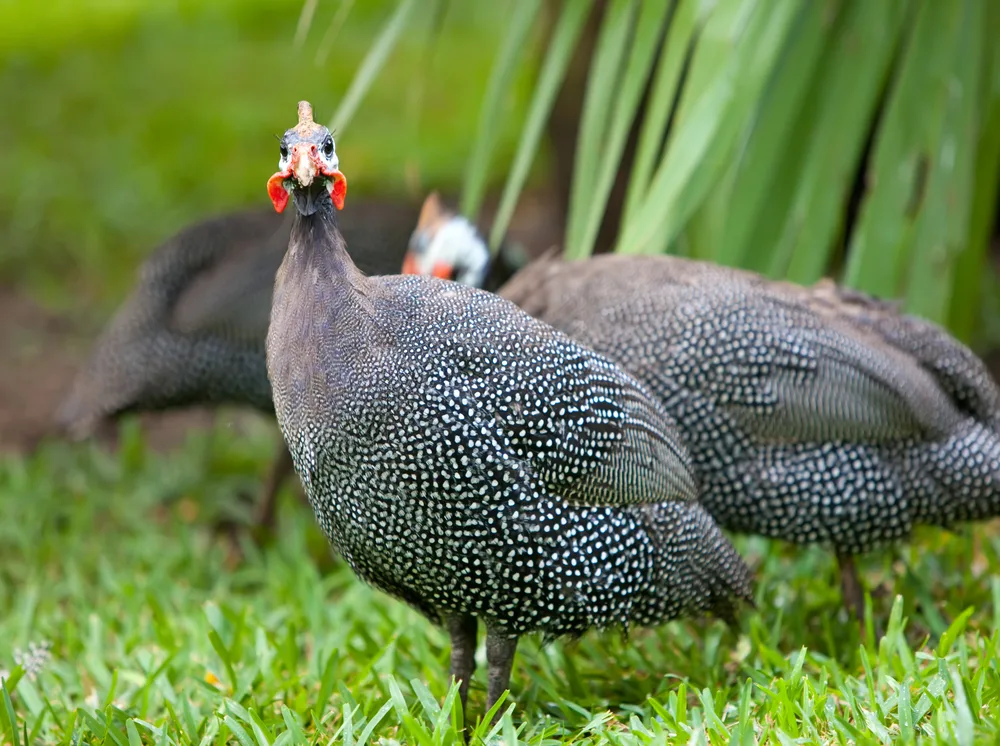
Do you have what it takes to grow a survival garden?
If you are concerned about food security and unpredictable times ahead, a survival garden may just be in your future.

Get the famous Rural Sprout newsletter delivered to your inbox.
Including Sunday musings from our editor, Tracey, as well as “What’s Up Wednesday” our roundup of what’s in season and new article updates and alerts.


